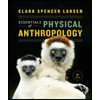Final Essay
.docx
keyboard_arrow_up
School
Taft College *
*We aren’t endorsed by this school
Course
2232
Subject
Anthropology
Date
Jan 9, 2024
Type
docx
Pages
11
Uploaded by MasterIron12798
1
Understanding Historical Discontinuity: A Tapestry of Religion and Reform
Lucero Lopez
Taft College
History 2210-42
Professor Smith
December 5, 2023
2
Understanding Historical Discontinuity: A Tapestry of Religion and Reform
Introduction
Michel Foucault's concept of historical discontinuity is of significance in
understanding the evolution of societies over time. This concept posits that history is not a
seamless continuum but rather marked by shifts, ruptures, and transformations. Religion
encompasses belief systems, rituals, and societal structures that have shaped human
civilizations. An exploration of religious history unveils both continuity and discontinuity,
underscoring changes in how beliefs are perceived, expressed, and categorized throughout
different epochs. This perspective provides the lens through which the history of religion will
be examined. As such, this essay aim to decipher the intricate dynamics of belief systems,
rituals, and societal structures that have woven in human spirituality. The essay will
undertake a broader exploration into the presence of discontinuity in religion laying the
groundwork for a comprehensive investigation into the multifaceted aspects of historical
change.
Overview of Ancient Civilizations
In examining the history of ancient civilizations, specifically the religious practices
offer a profound glimpse into the process of human history. Mesopotamia and Egypt, cradles
of civilization, stand as vivid examples where religious rituals and beliefs were woven
intricately into daily life. The continuity in fundamental religious concepts is palpable, with
shared themes of reverence for deities, ritualistic ceremonies, and the quest for spiritual
meaning echoing across the ages. However, within this continuum lies the potential for
intriguing discontinuities. The exploration of religious expression and classification unveils
shifts that challenge simplistic narratives. Mesopotamian polytheism, with its pantheon of
gods governing different aspects of life, contrasts with the Egyptian emphasis on cosmic
3
order and divine kingship. These variations highlight the complex interplay between
continuity and divergence in how societies perceive and manifest their spiritual beliefs.
Zooming further into antiquity, the lens widens to the Palaeolithic era, where
grooming practices become a unique portal into ancient societies. Judith C. Berman's "Bad
Hair Days in the Palaeolithic" provides an illuminating overview, disrupting stereotypes
surrounding Neanderthals and Upper Palaeolithic humans
1
. Grooming practices, often
dismissed as mere vanity, hold profound implications for understanding social complexity.
They serve as markers of identity, social roles, and perhaps even early forms of
communication, challenging preconceived notions about the simplicity of ancient lifestyles.
As we traverse the landscapes of Mesopotamia and Egypt, and delve into the nuances of
Palaeolithic grooming rituals, a rich panorama of human history unfolds. The juxtaposition of
continuity and discontinuity paints an intricate picture, illustrating the dynamic evolution of
religious beliefs and practices across ancient civilizations. These glimpses into the past
beckon us to navigate the interwoven threads of tradition and change, fostering a deeper
comprehension of the diverse landscapes that have shaped the human experience
Transition to Classical Periods
Looking at the transition to classical periods, the landscape of religious developments
in ancient Greece and Rome unfolds before us. The analysis of these developments reveals a
tapestry woven with threads of mythology and pantheons that exerted a continuous influence.
The enduring legacy of Greek and Roman mythology echoes through the ages, shaping
cultural narratives and societal norms. Yet, within this continuity, the emergence of
philosophical and monotheistic ideas introduces intriguing discontinuities. The classical
period witnesses the blossoming of philosophical thought in Greece, challenging traditional
1
Berman, Judith C. "Bad hair days in the Palaeolithic: modern (re) constructions of the cave man."
American
Anthropologist
101, no. 2 (1999): 288-304
.
4
mythological explanations. Thinkers like Socrates, Plato, and Aristotle questioned the
pantheon-centric worldview, paving the way for a nuanced understanding of existence and
morality. Simultaneously, on the other side of the Mediterranean, Quranic teachings emerge
as a beacon of enduring wisdom across millennia. A closer look at Sura 2, "The Cow," in the
Quran unravels universal values such as righteousness, charity, and prayer. These values—
which have their origins in the Quran—show continuity over time and provide direction to
those stepping into a variety of historical situations
2
.
The application of Quranic ideas in various temporal circumstances demonstrates the
investigation of discontinuities. The application of goodness and compassion changes as
societies change, but its fundamental principles never change. This dynamic flexibility
highlights the Quran's tenacity as a source of moral and spiritual advice applicable to a wide
range of historical and cultural contexts
3
. The continuity and discontinuity of Greek and
Roman mythology coexist with the revolutionary currents of philosophical and religious
ideas as we go through this area of transition. This story is further enhanced by the Quran's
timeless lessons. This investigation prompts us to reflect on the complex relationship between
innovation and tradition, offering insightful perspectives on the changing fabric of human
spirituality and scholarship
4
.
Medieval Period and Rise of Monotheistic Religions
When we go through the Middle Ages, we come into a world where monotheistic
religions—mostly Christianity and Islam—remain dominant. These religious practices,
distinguished by an unwavering devotion to a supreme god, had a significant impact on the
2
“Quran.” 2016. Surah Al-Baqarah [2]. Al-Quran - .
ميركلا نآرقلا
2016
. https://quran.com/2.
3
Ibid
4
Ibid
Your preview ends here
Eager to read complete document? Join bartleby learn and gain access to the full version
- Access to all documents
- Unlimited textbook solutions
- 24/7 expert homework help
Recommended textbooks for you

Essentials of Physical Anthropology (Third Editio...
Anthropology
ISBN:9780393938661
Author:Clark Spencer Larsen
Publisher:W. W. Norton & Company
Recommended textbooks for you
 Essentials of Physical Anthropology (Third Editio...AnthropologyISBN:9780393938661Author:Clark Spencer LarsenPublisher:W. W. Norton & Company
Essentials of Physical Anthropology (Third Editio...AnthropologyISBN:9780393938661Author:Clark Spencer LarsenPublisher:W. W. Norton & Company

Essentials of Physical Anthropology (Third Editio...
Anthropology
ISBN:9780393938661
Author:Clark Spencer Larsen
Publisher:W. W. Norton & Company